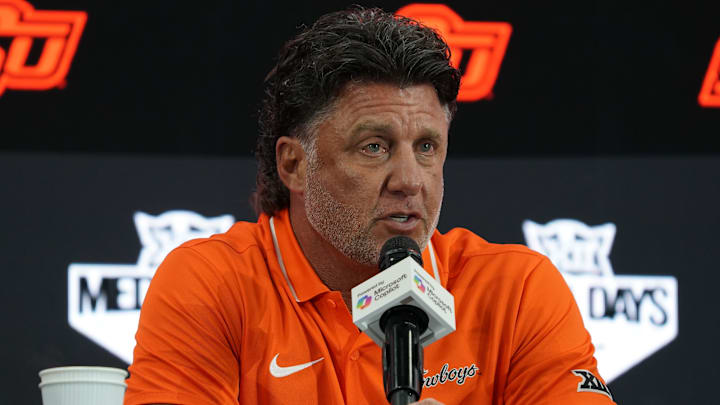As Oklahoma State football enters a period of transition and uncertainty, much of the focus has shifted to the future of longtime head coach Mike Gundy. Following a disappointing 3-9 season — including a winless Big 12 campaign — Gundy agreed to a restructured contract that significantly alters his salary and, most importantly, his buyout. During today's college football world, the coaches buyout is more important than before if changes are being looked at to be made. Reason for this is the NIL and how the players are now paid as well. The budget allocation is heavily dissected, so it's not as simple to just fire coaches and "buy" them out. The changes offer insight into the university’s thinking and suggest that discussions about Gundy’s future have taken place at the highest levels within the program.
Gundy's New Contract
Gundy’s new deal reduces his annual salary by $1 million, bringing it to $6.75 million for the 2025 season. Just as significant is the shift in contract structure. What was previously a rolling five-year extension has been replaced with a fixed four-year deal, set to run through 2028. While the salary reduction may seem symbolic, it reflects broader changes and a potential shift in how the university views its longtime head coach.
The most notable revision in the deal is the buyout clause. Under the new terms, if Oklahoma State were to part ways with Gundy without cause during any of the first three years of the agreement, the school would owe him a $15 million buyout. That figure drops to $10 million in the fourth and final year. While those numbers are still substantial, they are considerably more manageable than those under his previous contract, which made a firing financially unrealistic. The new terms give Oklahoma State a more practical path forward — should they choose to take it.
What This Means
This restructuring also raises the stakes. Gundy, now in his third decade with the Cowboys, finds himself operating with less job security and increased expectations. He knows what’s at stake this season — and so does the university. Last year, Oklahoma State was projected by many analysts to contend for a Big 12 title. With experienced talent returning and continuity in scheme, the team had every reason to believe it would compete at a high level. Instead, the season fell far short of expectations.
By accepting a pay cut and taking on more off-field responsibilities, including deeper involvement in fundraising, Gundy is being asked to do more than just win games. He’s being asked to adapt — something that has become increasingly important in today’s college football climate.
From the university’s perspective, the revised buyout offers a strategic advantage. It provides the flexibility to remain competitive in a rapidly evolving sport. Should performance continue to decline, Oklahoma State can now explore new leadership without putting its athletic budget in jeopardy. That said, any move would still carry financial and logistical challenges, from potential staff changes to competing in the escalating arms race of NIL and recruiting.
Oklahoma State's Flexibility
There are also internal pressures to consider. The contract changes came amid growing frustration from donors and fans. While Gundy remains a respected figure in Stillwater, the goodwill built over two decades is beginning to erode. The decision to revisit and revise his deal reflects a growing urgency from university leadership to hold everyone — even the most tenured — accountable.
In today's game, adaptability is crucial. The rise of NIL, the transfer portal, and a shifting conference landscape demand flexibility and innovation. While Gundy hasn’t ignored these changes entirely, he hasn’t fully embraced them either. The program wants to see stronger engagement in areas that now define success in modern college football. Put simply: if you’re not evolving, you’re falling behind.
Ultimately, the restructured buyout gives Oklahoma State options. It doesn’t necessarily mean Gundy’s tenure is nearing its end, but it does suggest the university is planning for multiple outcomes. Unlike past seasons, the administration now has the financial tools to act if change becomes necessary.
Conclusion
If Gundy leads a turnaround, his legacy will remain intact, and this entire conversation will fade. But if the struggles continue, Oklahoma State has positioned itself to move forward without being held back by an outdated contract.
In a sport where timing and flexibility often define success, the Cowboys are no longer tethered to the past. Mike Gundy still has the support of many in the program and the community — but even loyalty has its limits. With this move, Oklahoma State is showing it’s ready to think with its head, not just its heart. The new buyout terms are more than just numbers; they represent a philosophical shift, and possibly, a turning point in the identity of Cowboy football.
